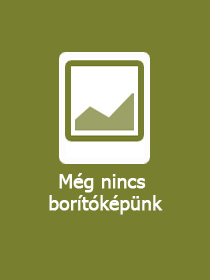
A termék adatai:
| ISBN13: | 9781009445115 |
| ISBN10: | 1009445111 |
| Kötéstípus: | Keménykötés |
| Terjedelem: | 296 oldal |
| Méret: | 260x186x21 mm |
| Súly: | 780 g |
| Nyelv: | angol |
| 0 |
Témakör:
Religious Architecture and Roman Expansion
Temples, Terracottas, and the Shaping of Identity, 3rd-1st c. BCE
Kiadó: Cambridge University Press
Megjelenés dátuma: 2025. március 6.
Normál ár:
Kiadói listaár:
GBP 90.00
GBP 90.00
Az Ön ára:
40 994 (39 042 Ft + 5% áfa )
Kedvezmény(ek): 10% (kb. 4 555 Ft)
A kedvezmény csak az 'Értesítés a kedvenc témákról' hírlevelünk címzettjeinek rendeléseire érvényes.
Kattintson ide a feliratkozáshoz
Kattintson ide a feliratkozáshoz
Beszerezhetőség:
Becsült beszerzési idő: A Prosperónál jelenleg nincsen raktáron, de a kiadónál igen. Beszerzés kb. 3-5 hét..
A Prosperónál jelenleg nincsen raktáron.
Nem tudnak pontosabbat?
A Prosperónál jelenleg nincsen raktáron.
Rövid leírás:
Uses architectural terracottas as a lens for examining the changing landscape of central Italy during the period of Roman military expansion.
Hosszú leírás:
Religious Architecture and Roman Expansion&&&160;uses architectural terracottas as a lens for examining the changing landscape of central Italy during the period of Roman military expansion, and for asking how local communities reacted to this new political reality.&&&160;It emphasizes the role of local networks and exchange in the creation of communal identity, as well as the power of visual expression in the formulation and promotion of local history.&&&160;Through detailed analyses of temple terracottas, Sophie Crawford-Brown sheds new light on 'Romanization' and colonization processes between the 3rd&&&160;and 1st&&&160;centuries BCE.&&&160; She investigates the interactions between colonies and indigenous communities, asking why conquerors might visually emulate the conquered, and what this can mean for power relations in colonial situations.&&&160;Finally, Crawford-Brown explores the role of objects in creating cultural memory and the intensity of our need for collective history-even when that 'history' has been largely invented.
'In this thoroughly researched and important book, Crawford-Brown addresses one of the most complex questions about one of the most transformative periods in ancient life: how did sociocultural practice change as Rome took control of Italia? In arguing for a multifaceted, un-centered invention of tradition, she lays a new path for the study of sacred sculpture, its creation and experience. A bonus is her success in explaining how terracotta remained a vibrant medium into the empire, despite the allure of marble, by harnessing a look back to both recent and long-distant pasts.' John North Hopkins, New York University
'In this thoroughly researched and important book, Crawford-Brown addresses one of the most complex questions about one of the most transformative periods in ancient life: how did sociocultural practice change as Rome took control of Italia? In arguing for a multifaceted, un-centered invention of tradition, she lays a new path for the study of sacred sculpture, its creation and experience. A bonus is her success in explaining how terracotta remained a vibrant medium into the empire, despite the allure of marble, by harnessing a look back to both recent and long-distant pasts.' John North Hopkins, New York University
Tartalomjegyzék:
1. Introduction; 2. Chronological Uncertainties and the 'Romanization' Tangle; 3. The Power of the Past: Conscious Archaizing and the Development of the 'Standard Temple Kit'; 4. Local Identities and Local Networks: Two Case Studies; 5. Inventing History, Inventing Identity; 6. Reframing and Remediating: Architectural Terracottas in Augustan Rome; 7. Conclusion.






